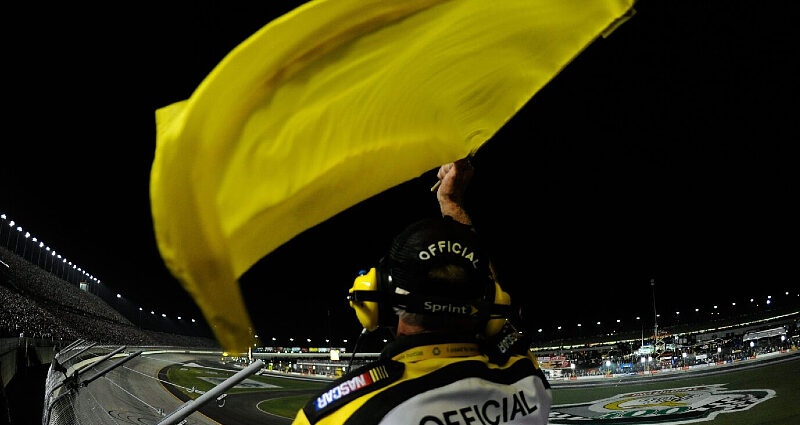NASCAR thrives on its raw, unpredictable energy. Yet, that same unpredictability has morphed into a source of frustration for drivers, teams, and fans alike, thanks to the sanctioning body’s inconsistent approach to caution flags. Two races into the 2025 NASCAR Cup Series season—the Daytona 500 and the Ambetter Health 400 at Atlanta Motor Speedway—lay bare this issue, leaving everyone questioning the logic behind the yellow flag. It’s time for NASCAR to stop playing roulette with its rulebook and give its stakeholders some clarity.
Take the Daytona 500. William Byron cemented his status as a superspeedway titan, clinching his second straight victory in a finish that saw chaos erupt behind him. A massive wreck unfolded on the final lap, yet NASCAR held off throwing the caution and let Byron take the checkered flag under green. The call leaned on the idea of letting the race play out naturally—a choice that, while not universally loved, aligned with the ethos of superspeedway racing. Drivers like Denny Hamlin grumbled about the mayhem, but it was mostly accepted it as part of the deal. And so the stage was set: late-race incidents wouldn’t necessarily trigger an immediate yellow.
Then came yesterday’s race at Atlanta. With the finish line in sight, another multi-car tangle broke out—par for the course on Atlanta’s drafting-heavy track. This time, though, NASCAR didn’t wait. The caution flag flew almost instantly, locking in the running order and handing Christopher Bell the win over Carson Hocevar and Kyle Larson. The swift yellow stunned fans and drivers alike, especially after Daytona’s let-it-ride approach. Social media lit up with complaints: “Daytona gets a green finish, but Atlanta gets a caution? Make it make sense.” The whiplash between these two calls has everyone second-guessing NASCAR’s playbook.
This isn’t a new headache. Look back to the 2023 Daytona 500—Ricky Stenhouse Jr. snagged the win under caution after a wreck prompted a yellow just as the leaders hit the white flag. Contrast that with other races, like the 2024 Talladega spring race, where NASCAR let the field duke it out through the chaos. One race gets a quick trigger; another gets a long leash. Drivers like Denny Hamlin and Joey Logano, who thrive on strategy, are forced to guess what NASCAR might do next, while teams scramble to adapt to officiating that feels more like a roll of the dice than a rulebook.
The inconsistency breeds suspicion. At Atlanta, whispers swirled: did NASCAR throw the caution to thwart Carson Hocevar’s shot at victory? Hocevar had spent the race ruffling feathers, bumping and banging his way through the field, leaving a queue of drivers ready to confront him post-race. A win for the Spire Motorsports youngster might’ve sparked outrage among his peers. Was NASCAR’s quick yellow a calculated move to dodge that drama? Theories like these gain traction because NASCAR’s decision-making stays shrouded in mystery, eroding trust at every turn. Even when officials like Elton Sawyer or Steve O’Donnel attempt to explain it, questions often remain because the explanations are every bit as confusing.
NASCAR can fix this—but it has to want to. Transparency is non-negotiable: tell us why a caution flies, whether it’s for safety, timing, or something else. Consistency is the backbone: set firm guidelines and follow them, no matter the track or the lap. Fans crave green-flag finishes, so if a wreck hits the backstretch as the leaders charge to the line, let them race it out under green. Those cars won’t barrel through the crash site again; they’re already past it. NASCAR could station rescue vehicles at access points along the backstretch, ready to roll in without crossing the racing surface—no more excuses about safety delays. Better yet, adopt a clear policy: unless the incident blocks the track or demands immediate intervention, the race stays green to the end. A simple, predictable standard like that would cut through the fog of doubt. If NASCAR wants to squash rumors of manipulation and rebuild faith in its officiating, it can’t keep serving up this caution chaos. The sport’s heart beats on the track—let it race there, not in the control tower.

